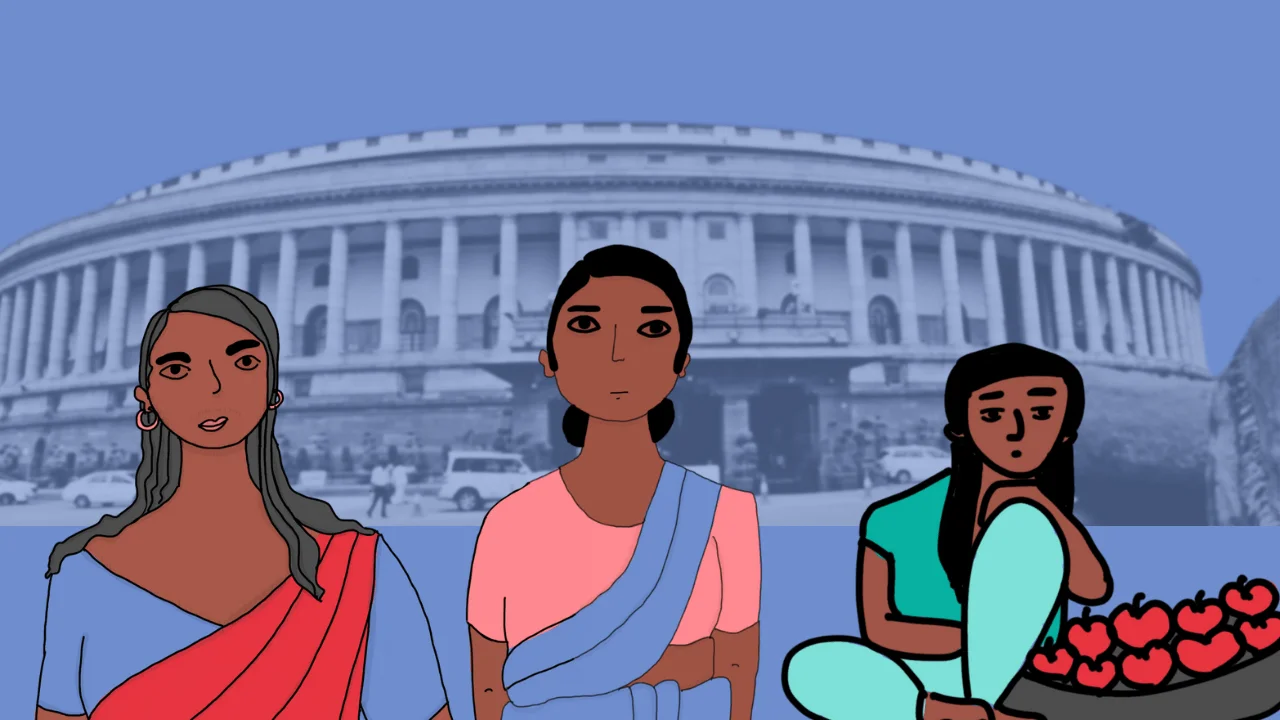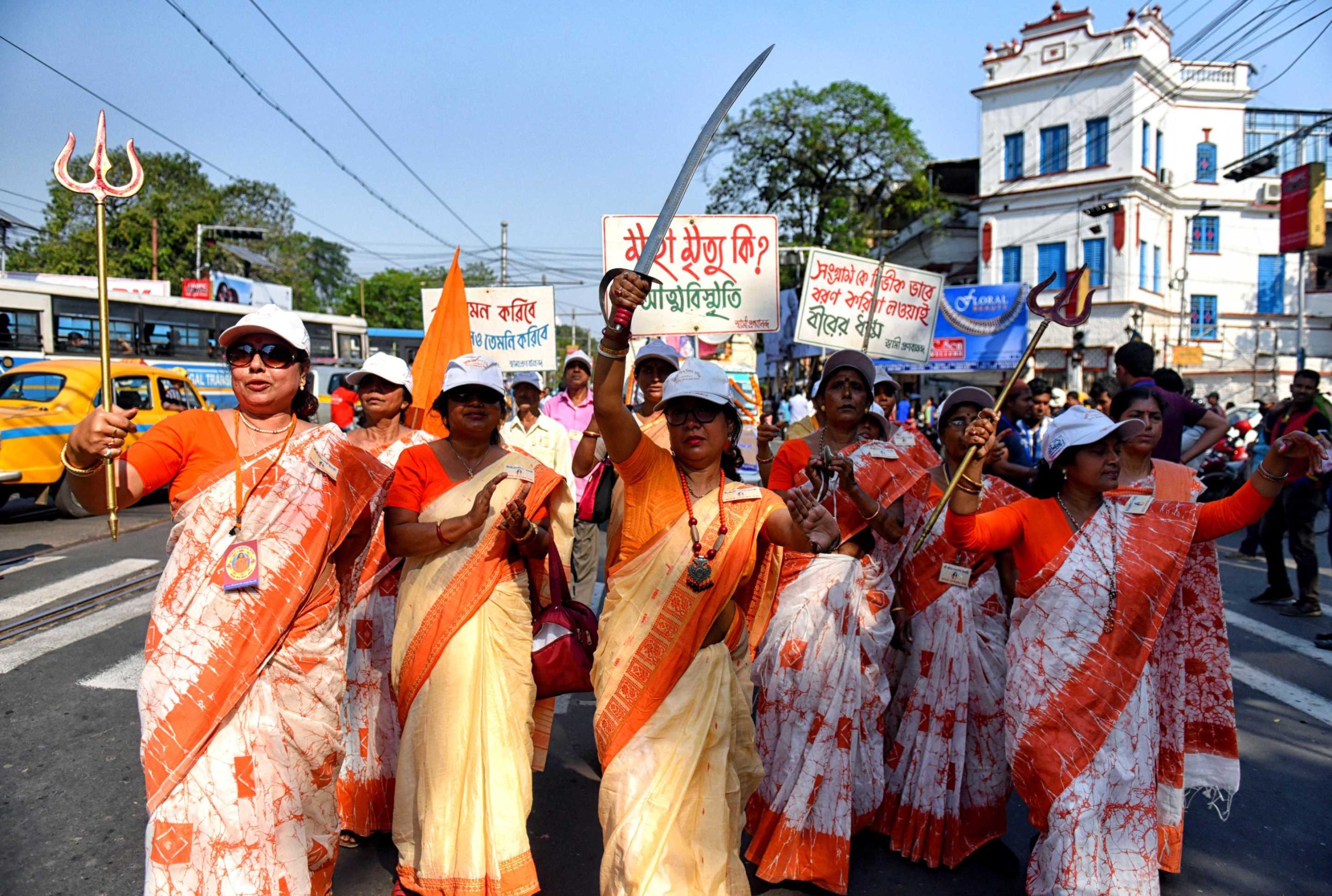Hand-wringing over illegal immigration has long been a feature of far-right politics across the globe. The increasing catastrophising in India regarding immigrants stealing jobs, causing demographic changes, and posing a threat to locals in the run-up to the Jharkhand State Assembly elections is right out of the far-right playbook While anti-immigrant sentiment runs high, not all immigrants are made equal in the Indian popular and political imagination.
The country sees immigration from various religious groups but the political alarmism is limited to Muslim immigrants from neighbouring Bangladesh and Myanmar. In recent years, the country has even legislated this bias through the contentious Citizenship (Amendment) Act, 2019, which paves the way to citizenship for immigrants from the Hindu, Buddhist, Jain, Sikh, Parsi, and Christian communities from neighbouring Muslim-majority countries, but excludes Muslims from these countries from obtaining citizenship. Instead, Muslim immigrants in India have been increasingly labelled ghuspetiyas (infiltrators), with the narrative being fervently peddled for political gain.
The campaign for the second phase of the Jharkhand Assembly election, which concluded on November 20, 2024, has been rife with the ‘infiltrator‘ rhetoric.
The campaign for the second phase of the Jharkhand Assembly election, which concluded on November 20, 2024, has been rife with the ‘infiltrator‘ rhetoric. The furore regarding Bangladeshi immigrants is at a fever pitch, with the Bharatiya Janta Party working overtime to stoke the flames of anti-immigrant sentiment, communalism, and Islamophobia in a bid to wrest power from the incumbent Hemant Soren and his Jharkhand Mukti Morcha (JMM)-led coalition government.
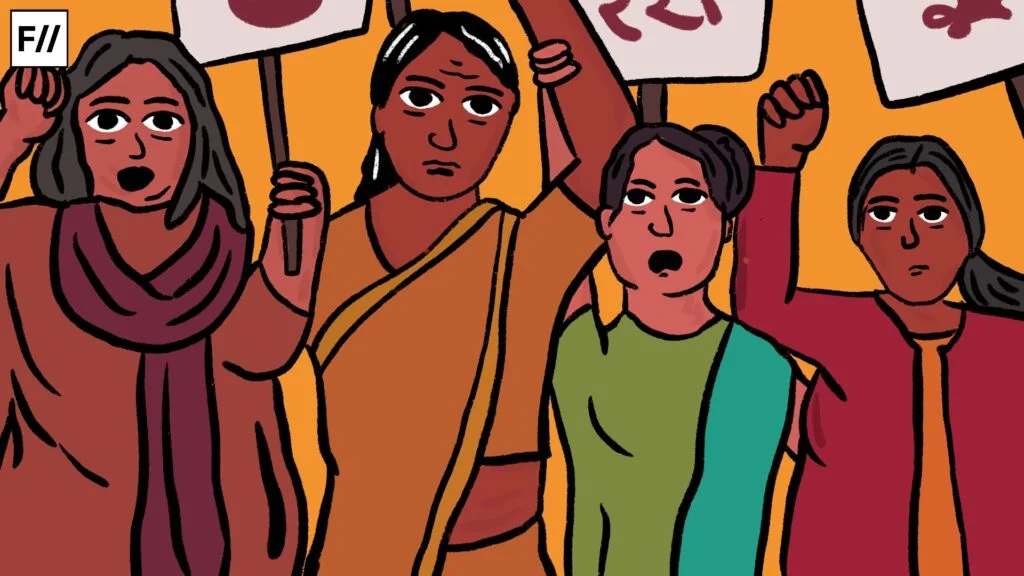
BJP top brass including Narendra Modi, Amit Shah, J P Nadda, Yogi Adityanath, and Himanta Biswa Sarma have all raised concerns regarding Bangladeshi immigration to the state and even alluded to the JMM-led coalition harbouring illegal immigrants, allocating land to them, and aiding them in obtaining legal papers and documents. Narendra Modi in a public meeting said the party would protect the state’s ‘roti, mati, beti (bread, soil, daughter).’ The fearmongering over “infiltrators”, is especially aimed towards areas like Santhal Pargana, which has a high Adivasi population and contains eighteen assembly seats.
Using women to further propaganda in Jharkhand
But central to the BJP’s “infiltrator” bogey are Adivasi women. Fear-mongering over love-jihad-like conspiracies by Bangladeshi immigrants to grab Adivasi land has been peddled by Hindutva forces before, but it has gained momentum in the lead-up to the Jharkhand election, with both Modi, Shah, and other BJP top brass playing it up. Modi, in a recent address in Deoghar, cautioned against marriage-for-land-grab conspiracies, saying, ‘Tribal girls were duped into marriage, their lands were grabbed.‘
Union Home Minister Amit Shah, while addressing a rally in the state, said that the party would introduce a law which ensures that Adivasi women married to “infiltrators” can’t transfer their land to their spouse and any land that has been transferred will be reclaimed. J P Nadda asserted that such a law would also prevent children of Adivasi women married to Bangladeshi immigrants from inheriting their mothers’ land.
But the most disturbing aspect, perhaps, is the identification of Adivasi women married to Bangladeshi immigrants and the circulation of their names. The Wire reported that in the Santhal Pargana region, the names of Adivasi women sarpanches allegedly married to Bangladeshi immigrants have been circulating on WhatsApp under the title ‘Yeh Hai Shariyantra (this is a conspiracy)’.
The Wire reported that in the Santhal Pargana region, the names of Adivasi women sarpanches allegedly married to Bangladeshi immigrants have been circulating on WhatsApp under the title ‘Yeh Hai Shariyantra (this is a conspiracy)’.
In a July 20, 2024, address to the Jharkhand BJP State Working Committee, Amit Shah made claims of ‘land jihad‘ and ‘love jihad‘ and said that ‘thousands of infiltrators‘ marry Adivasi girls in a bid to obtain certificates and buy land. This was followed by BJP MP Nishant Dubey of Jharkhand claiming in the Parliament that there were at least a hundred Adivasi sarpanches in the state that were married to Bangladeshi “infiltrators”. Days later, another party leader and National Commission for Scheduled Tribes (NCST) member, Asha Lakra, claimed in a press conference that eight sarpanches, a panchayat samiti member, and a zilla parishad chairperson were ‘victims‘ of this marriage-for-land-grab conspiracy.
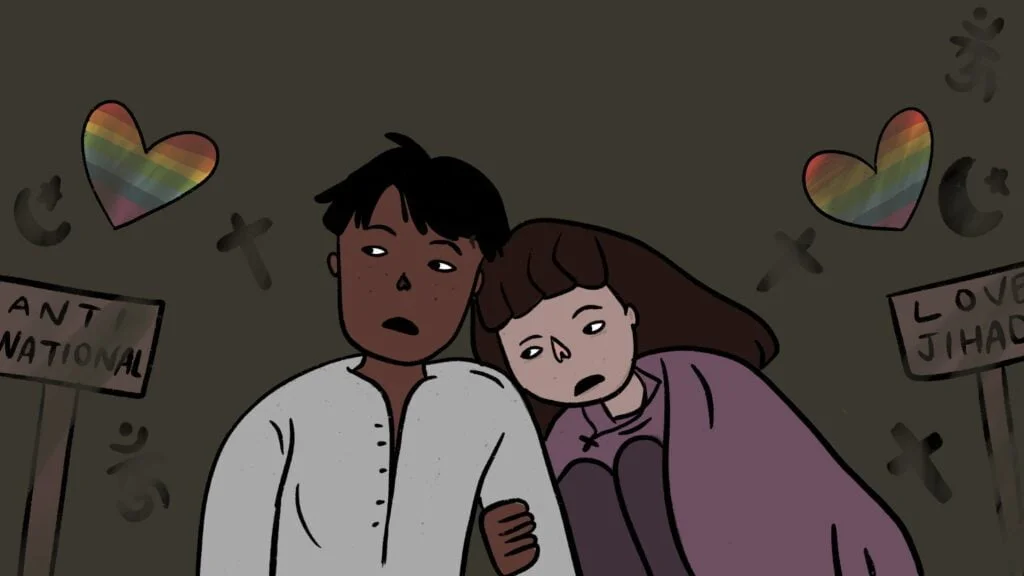
An investigation by Scroll into the claims found that in four of the ten instances cited by Lakra, the Adivasi women were either married to Adivasis or Hindus. The remaining six women, while married to Muslims, did so of their own volition and inherited no family land and don’t stand to inherit any either. While Lakra mentioned no names, following her comment, a list naming Adivasi local representatives married to Bangladeshi “infiltrators” began to do the rounds; but the names featured on the list were erroneous in most cases, or made false claims regarding inter-faith marriages, or misidentified Indian Muslims as Bangladeshi immigrants. Scroll reported no transfer of Adivasi land to spouses in any of the cases or any of the women inheriting family land in the first place.
The narrative around land jihad, as with any Hindutva conspiracy theory centred around women, plays to patriarchal fears regarding women, the exercise of their autonomy, and the notion of “family honour” that wrests in them. Infantilising women by pushing the misogynistic narrative that their inherent naivety and lack of worldliness make them optimal targets for coordinated Muslim-hatched conspiracies against Hindus has been a Hindutva go-to.
The beti that the BJP seeks to “protect” is a political prop. The love/land jihad narrative, apart from being Islamophobic, harms women by subjecting them to increased patriarchal control by families and communities and normalises the disregard and externalisation of their autonomy, all in the name of “protecting” them. Even the list identifying Adivasi women married to Muslims in Santhal Pargana could expose the couples named to harassment and violence. By tapping into patriarchal fears surrounding the beti, Hindutva has long used women to evoke sharper responses and widespread approval of its Islamophobic propaganda by calling into question the safety of women and creating myths surrounding their systematic and concerted exploitation by Muslim men.
Shah has also said that the BJP will introduce a Uniform Civil Code (UCC) in the state if they win (Adivasis will remain out of its ambit).
Shah has also said that the BJP will introduce a Uniform Civil Code (UCC) in the state if they win (Adivasis will remain out of its ambit). Another BJP state to introduce such legislation recently was Uttarakhand, and the purported women-centric UCC not only did nothing meaningful for women but reinforced patriarchal frameworks and was mired in misogyny and the systematic denial of women’s autonomy. Uniform Civil Codes are always propagated as being for the benefit of women, but they ultimately only seek to exert control over women in furtherance of Hindutva political agendas. In 2022, then Madhya Pradesh Chief Minister Shivraj Singh Chouhan claimed people marry Adivasi women in the state in a bid to grab their land and deemed this as another form of ‘love jihad’. Days following this, he announced the formation of a committee for the implementation of UCC in the state.
Adivasi women are undoubtedly being utilised for political gain in Jharkhand, but in the process, they are being infantilised, spoken over, and made vulnerable to harassment and violence. Further, the real issues concerning access to basic needs, development, and quality of life that plague Adivasi communities are being sidetracked because they don’t have the same political mileage that sensationalist conspiracy theories do.
Adivasi concerns sidetracked in Jharkhand
Tribals remain the poorest demographic, with half the Adivasi population living in multidimensional poverty, according to the United Nations. Adivasis’ access to even the most basic needs and facilities is precarious, and the fuss over “infiltrators” only detracts from these real, pressing issues. The Santhal Pargana region, consisting of the districts of Dumka, Deoghar, Godda, Jamtara, Sahibganj, and Pakur is the focus of the far-right propaganda of Bangladeshi infiltration in Jharkhand, but while Islamophobic rhetoric takes centre stage in the region this election, Santhal Pargana continues to be severely underdeveloped.
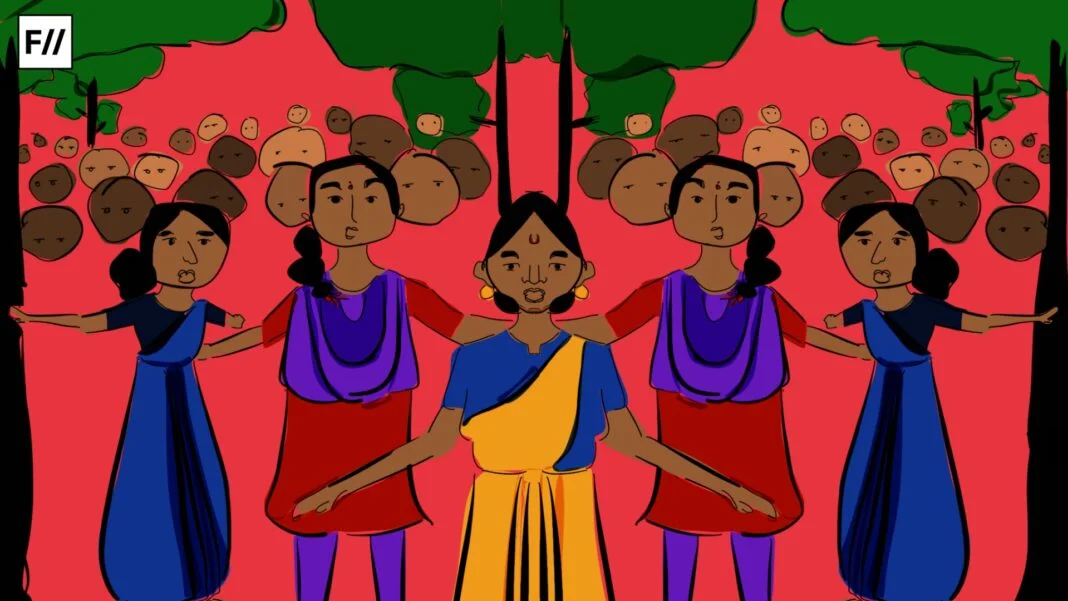
Pakur, one of the six districts of the region, has long remained one of the poorest in the country; while Dumka is one of India’s 50 districts with the poorest health outcomes. A NITI Aayog report analysing multidimensional poverty found that Pakur, Sahebganj, and Dumka were among Jharkhand’s top five districts with the highest population of the multi-dimensionally poor, with Pakur and Sahebganj featuring in the first and second spot respectively. An analysis of the same MPI report, which was based on data from National Family Health Survey-5, reveals that Pakur ranks seventh nationwide in terms of the highest population of the multi-dimensionally poor.
Further, in 2016 the then BJP-led state government in Jharkhand attempted to amend laws protecting tribal land in the state, namely the Chotanagpur Tenancy Act, 1908 and the Santhal Pargana Tenancy Act, 1949. Both laws are integral to protecting tribal land and prevent the sale and transfer of Adivasi land to non-Adivasis. The amendment to these laws, which passed the state assembly amid severe opposition, removed restrictions on the non-agricultural use of agricultural land and permitted the transfer of Adivasi land for public purposes. The National Commission for Scheduled Tribes (NCST), opposed the move saying it wouldn’t benefit the tribals in the area and raised concerns over land alienation (the acquiring of land from customary owners by the government). The bills seeking the amendments were ultimately withdrawn but it calls into question the BJP’s alarmism over tribal land now.
Priyasheela Besra, a social activist from Santhal Pargana, told Scroll that Adivasis follow customary laws in matters of inheritance and Adivasi women in Jharkhand ‘do not hold inheritance rights over their father’s land, so the argument that non-Adivasi men are marrying women to capture their land is baseless.’ Newslaundry quoted Besra as saying, ‘Many tribals marry outside their community, including Hindus, Christians, and Muslims. Why are only those married to Muslims being targeted?‘ Land jihad is Hindutva rhetoric aimed at political gains in Jharkhand, but it serves Hindutva propaganda and Islamophobic narratives pan-India.
Fuelling conspiracies regarding concerted demographic changes
An influx of illegal Bangladeshi immigrants leading to a dwindling Adivasi population is a myth. According to the Times of India, Election Commission data released during the updating of electoral rolls found the growth rate of the electoral population of the Santhal Pargana region to be 13.9 per cent, close to the state average. The majority of right-wing blustering about demographic changes is neither reflected in nor backed by data: it is merely Hindutva fantasy.
The majority of right-wing blustering about demographic changes is neither reflected in nor backed by data: it is merely Hindutva fantasy.
Ashwini Upadhaya, a Supreme Court advocate and former BJP spokesperson, claimed in 2023 that five crore Bangladeshi immigrants had entered the country illegally. No data was found to support his claim. Even Nishant Dubey’s claims in the Parliament about a hundred Adivasi representatives in local government in Jharkhand being married to Bangladeshi immigrants were backed by no data. Asha Lakra’s claim about ten such specific instances was debunked.
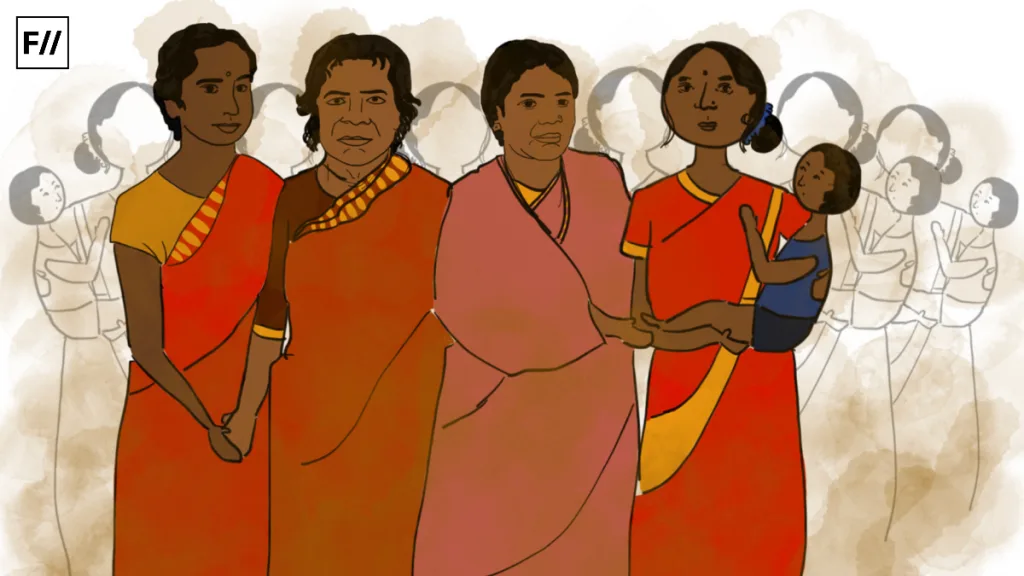
While the tribal population in the Santhal Pargana region has indeed seen a decrease, which the BJP and Hindutva proponents have attributed to an influx of illegal Bangladeshi immigration, this emphatic claim is in contradiction to the Centre’s affidavit filed in the Jharkhand High Court, which read ‘The share of population of scheduled tribes in Santhal Pargana in the year 1951 was 44.67% which became 28.11% in 2011. However, quantum of decrease in tribal population due to outward migration, low childbirth rate among tribal conversion to Christianity and other reasons need to be assessed.’ Further, an Indian Express report found that the tribal population in Jharkhand has been declining since before independence, with out-migration playing a significant role.
The hue and cry over “infiltrators” is not based on data or facts, but is a smokescreen for Islamophobic Hindutva propaganda, not just in Jharkhand, but across India. Hindutva propaganda regarding Muslim-devised demographic changes has long been used. Most notably during the 2024 General Elections following an EAC-PM study, which saw Hindutva proponents and media outlets parroting the claim that the Muslim population in the country has exploded and the Hindu population is declining based on half-truths.
The conspiracy theory of intentional demographic changes being orchestrated by Muslims centres on women. Claims that Muslims are conspiring to use women to increase their population by employing love jihad against Hindu women, through sustained efforts to encourage Muslim women to have as many children as possible, and opting for inter-faith marriages with Adivasi women to grab land and drive out the local population. In all cases, Islamophobia is perpetrated while simultaneously infantilising women and denying their agency. And in all cases, there are no facts or data to support these claims, and in some instances, available data easily debunks these claims.
While fervent outcries about “infiltrators” and the dangers they pose to roti, mati, and beti are promulgated by politicians and political groups, the realities of underdevelopment, poverty, and precarious access to health and education are pushed into the background. Issues that actually will benefit Adivasi voters in the Santhal Pargana region, and across the state, are being sidelined to make room for Hindutva rhetoric, fuelling propaganda, and political grandstanding. A myth is overshadowing the realities and critical concerns in one of India’s poorest states.
About the author(s)
